Did COVID-19 and lockdowns lead to a baby boom - or a baby bust?

A new analysis of Discovery Health Medical Scheme (DHMS) data looks at birth rates during the first three years of the COVID-19 pandemic, revealing fascinating insights from the adult and teenage member population.
Authors
Lizelle Steenkamp (Senior Healthcare Statistician), Lara Wayburne (Senior Actuary) and Shirley Collie (Chief Healthcare Analytics Actuary).
A look back: 14 years and more than 460,000 births
To determine whether the COVID-19 period led to any changes in birth rates, we first established pre-pandemic birth trends.
To do this, we analysed claims data for deliveries that occurred between January and October each year, between 2008 and 2022. We included all births in the analysis, whether these deliveries resulted in a live or a still birth.
Hospitals typically take up to three months to submit claims to Discovery Health Medical Scheme (DHMS) for payment (for a range of administrative reasons, including prolonged hospital stays). So, births occurring in November or December may fall within the following year's claims data. To ensure that we counted births in the year in which they took place, we only included births occurring earlier between January and October of each year in the yearly data.
Birth rates among DHMS members have been falling since 2008
- In total, the analysis included 464,752 births over 14 years.
- Birth rate is calculated as the number of births divided by the number of females between ages 15 and 49.
We found that even before the pandemic period (2020 onward), the total number of births among DHMS members showed a decline.
For example, there was a 3% decrease in total births between 2018 and 2019, (see Figure 1).
As shown in Figure 1, this decrease continued throughout the pandemic with a 6%, 10% and 11% reduction for January to October 2020, 2021 and 2022 respectively, relative to 2018 levels.
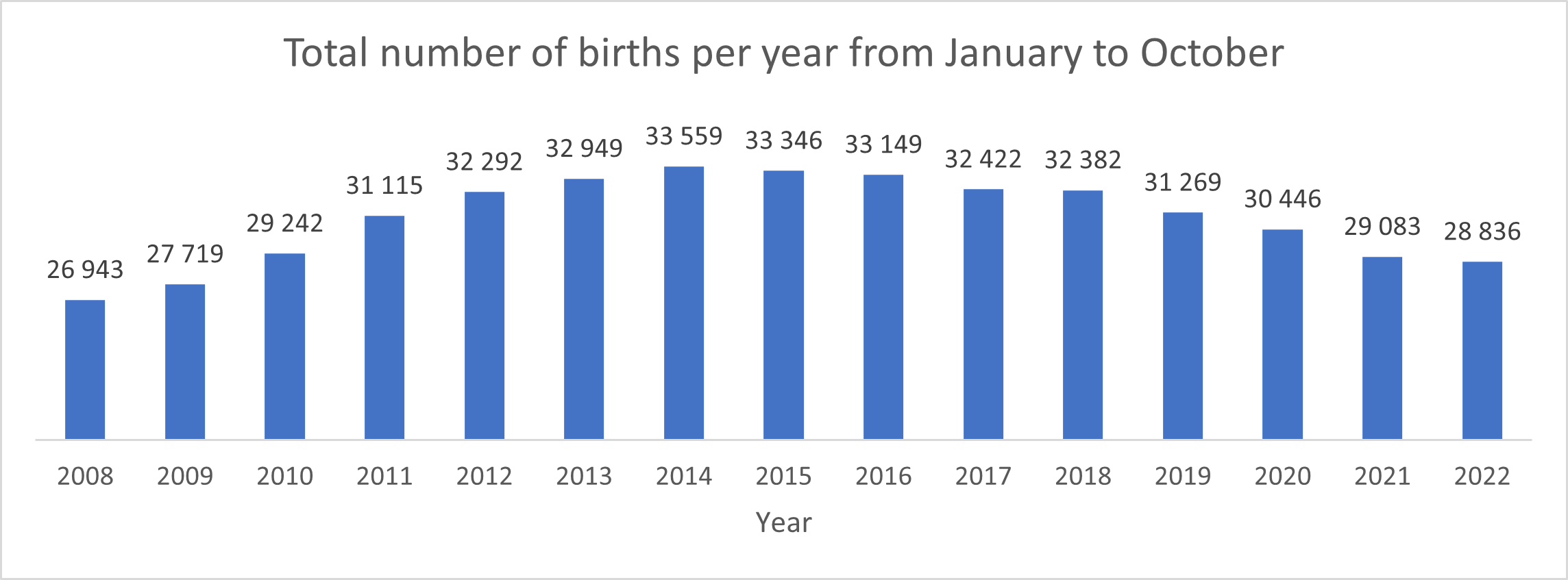
Figure 1: Total number of births for DHMS members from January to October each year, 2008-2022
Age-standardised birth rates among DHMS members have in fact been falling since 2008. Here's why:
The average age of members in the scheme increased over the study period. To account for shifts like this, we calculated the age-standardised birth rate per 1,000 person years or an average of the age-specific birth rates per 1,000 person years (in other words, per woman per year of observation). This was weighted by the proportion of females and person years in the corresponding five-year age bracket, in other words 15-19, 20-24, 25-29 and so on.
Although we only tracked births in 10 months of the year, January to October of each year, we standardised rates to person years relative to the rates for the full year in each previous year. This allowed us to account for seasonal peaks and dips in births within South Africa and to give a full year estimate of the 2022 birth rate per 1,000 person years.
When accounting for demographic changes in age in the DHMS population between 2008 and 2022, the age-standardised birth rate fell by 12.4% in this 14-year period (from 54.4 births per 1,000 person years to 47.6 per 1,000 person years). Figure 2 shows the yearly age-standardised birth rate per 1,000 person years.
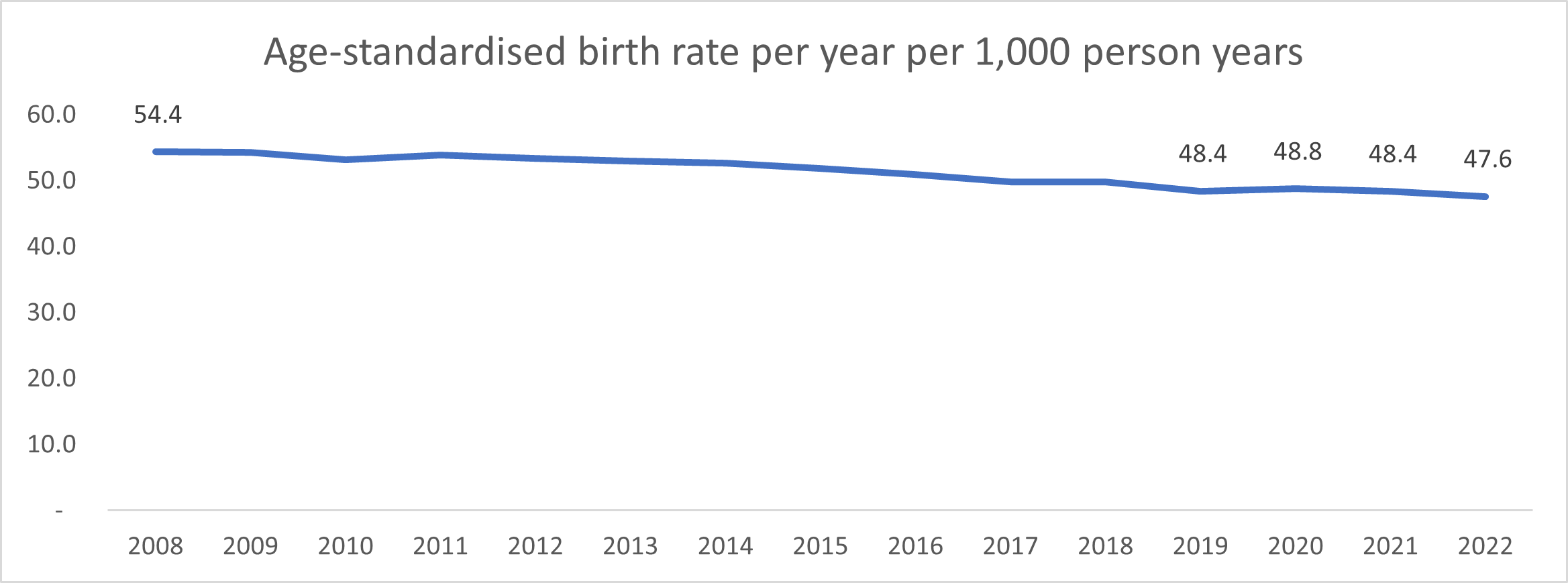
Figure 2: Age-standardised birth rate per 1,000 person years between 2008 and 2022.
Over the pandemic period, birth rates show a slight boost before they reach historic lows
The pandemic's onset (2020) was initially associated with a slight increase (0.7%) in the overall birth rate compared to 2019 levels, as the birth rate increased from 48.4 in 2019 to 48.8 per 1,000 lives in 2020. However, rates then declined, returning to near 2019 levels in 2021 (48.4 per 1,000 person years).
Ultimately, rates dropped even further (1.7%) in 2022 compared to 2019 levels, reaching an all-time low for the 14 years included in the analysis (47.6 per 1,000 lives).
The reduction in birth rates was as a result of the number of births not growing at the same rate as the increase in female DHMS members of childbearing age, as shown in Figure 3.
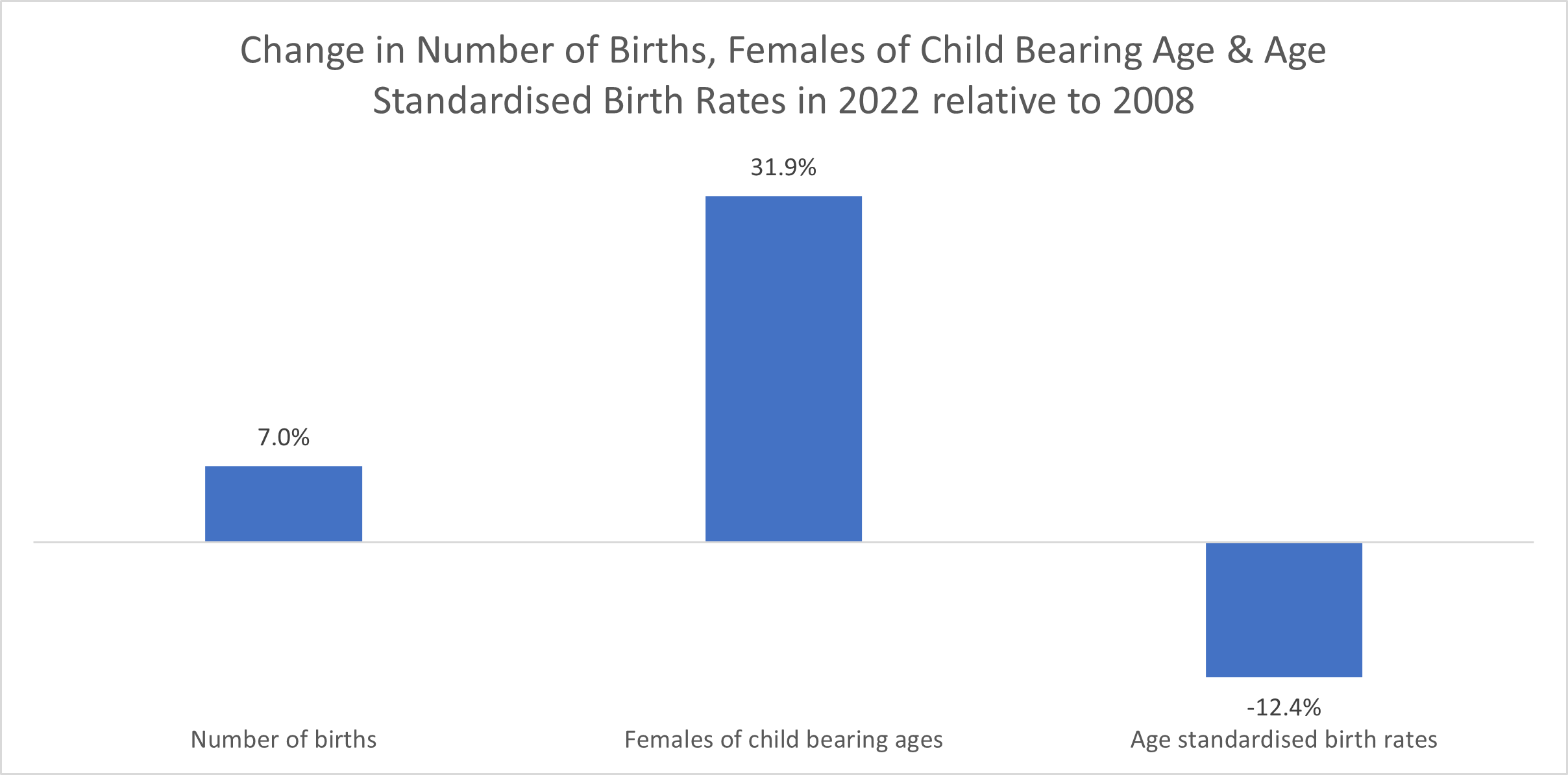
Figure 3: Change in number of births, females of child-bearing age and age-standardised birth rates in 2022, relative to 2008.
Further analysis reveals that declining birth rates between 2008 and 2022 are the result of massive, historical reductions in teenage pregnancies and pregnancies among young adults. This is shown in the trends in birth rates by age group presented in Figure 4. We describe these large decreases in detail later.
Among all age groups under 29 years, birth rates fell in 2009 and continued to fall through 2020, 2021 and 2022.
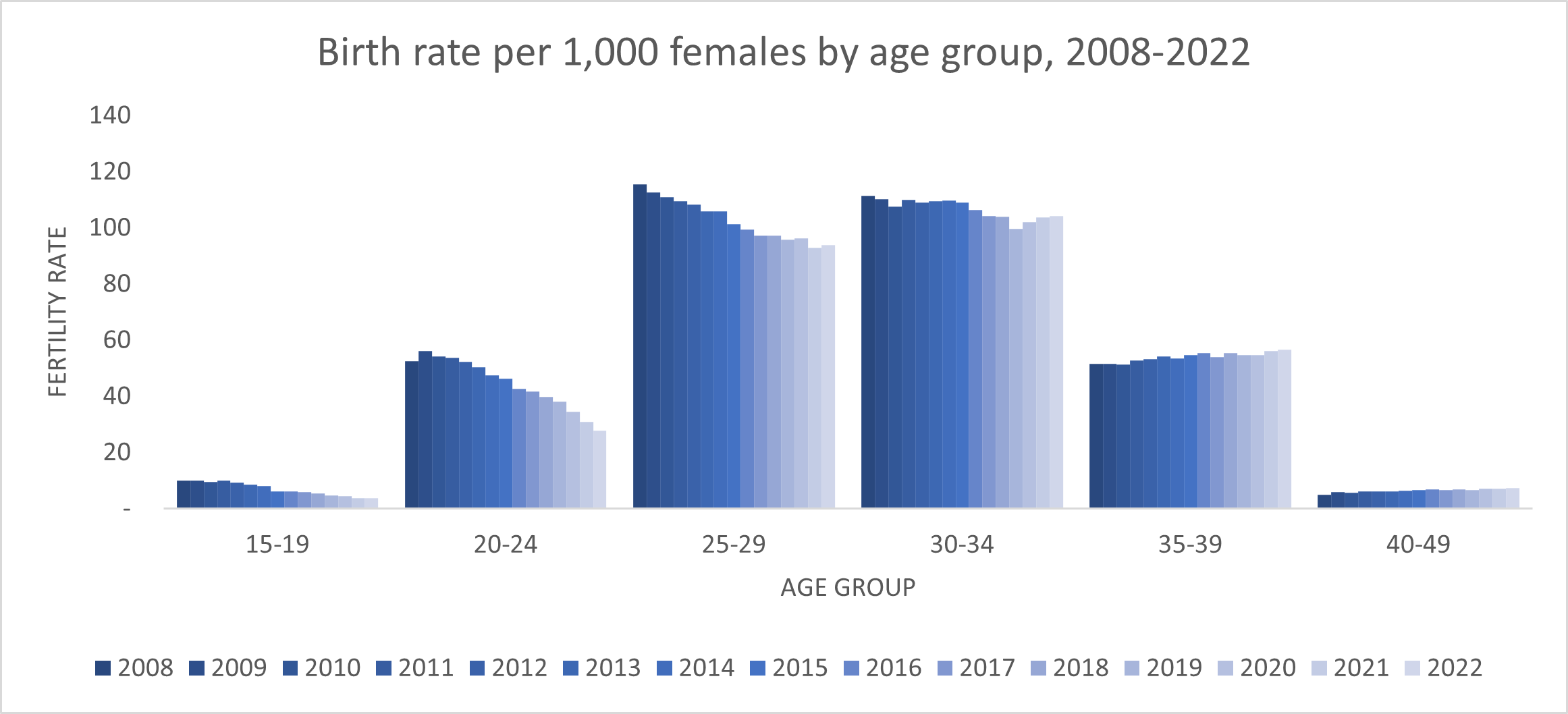
Figure 4: Change in birth rate per 1,000 females by age group, 2008-2022
Baby boom or bust? Changes to birth rates during first three years of COVID-19 depend on age
Females aged 20-24 experienced the largest decrease in birth rates over the first three years of the COVID-19 pandemic, a reduction of 9.9% per year, as shown in Figure 5 below.
On the other hand, females older than 30 experienced an increase in birth rates:
- Among females in their early 30s, birth rates were slightly up in 2020, 2021 and 2022 after falling in 2019, although they had not recovered to pre-COVID rates.
- Among females in their late 30s we also find a small increase in birth rates over time as with those older than 40 years too, albeit at a much lower level.
Ultimately, females in their 40s had the greatest increase in birth rates over the course of the early pandemic period, but the rate of growth was slightly lower than in the years before COVID-19.
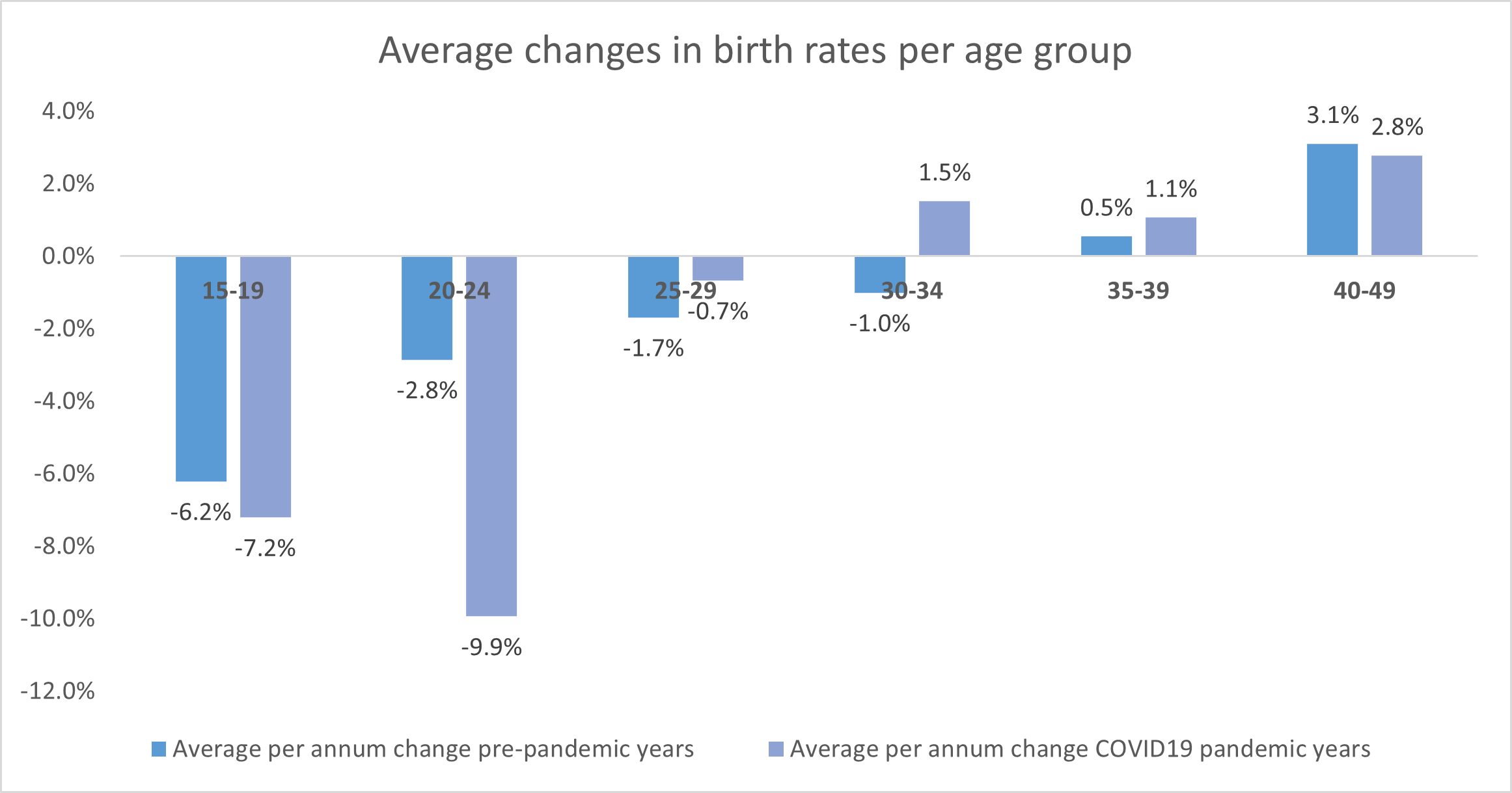
Figure 5: Average change per year in birth rates per 1,000 person years by age group in the years before the COVID-19 pandemic (2008-2019) as compared to after the start of the COVID-19 pandemic (2020-2022).
Teen pregnancies among DHMS members have fallen by more than 60% since 2008
Young adults (20 to 24) saw the sharpest birth rate decline during the pandemic.
Our analysis also revealed a significant and steady decline in teenage pregnancies over the 14 years. In fact, females between ages 15 and 19 experienced a massive 62% reduction in birth rates since 2008.
In 2022, this group only saw 3.8 births per 1,000 life years - down from 9.9 births in 2008.
Meanwhile, the birth rates among young adults aged 20-24 fell by nearly half (47.2%) - from 52.6 to 27.8 births per 1,000 life years over the same period.
Our study is limited to teenagers with medical insurance and findings cannot be generalised to a broader, uninsured population.
Our research did not examine what explained the sharp drops in teenage and young adult DHMS member pregnancies. However, our findings are in contrast to recent data that show teenage birth rates among females aged 15 to 19 in the public health sector increased by about 12% between 2017 and 2022.4
Only about one in 10 femalesget contraceptives from the private healthcare sector, according to the country's most recent Demographic Health Survey in 2016.3
In general, teenage pregnancy in South Africa has been associated with poor health outcomes for mothers and children and, in the case of very young mothers, low birth weights for babies.1 Additionally, teen pregnancies have been shown to disrupt schooling, which may impact a woman's future HIV risk.2
Conclusion
So, what might be happening? In 2021, researchers writing in the journal of Population, Space and Place speculated that the pandemic would not have a uniform effect on birth rates but would affect childbearing differently based on a woman's age.4
The DHMS-observed, age-specific birth trends are consistent with these predictions.
The age-standardised birth rate amongst the DHMS population did not, overall, increase over the pandemic.
However, we observed different trends by age group: Females aged 20-24 experienced the largest decrease in birth rates over the course of the early COVID-19 pandemic period - a reduction of 9.9% per year.
In contrast, females in their 40s had the greatest increase in birth rates over the course of the early pandemic period, but the rate of growth in birth rates was slightly lower than in the years before COVID-19.
Females older than 35 experienced a smaller increase in birth rates per year between 2020 and 2022 than pre-pandemic years. Among those in their early 30s, birth rates were slightly higher in 2020, 2021 and 2022 after falling in 2019, although they had not recovered to the rates recorded before 2019. Females in their late 30s saw a small increase over time as did those aged over 40 years, albeit at a much lower level than pre-pandemic years.
Our analysis also revealed - for the first time - large, historical declines in pregnancies among teenagers and young adults in the DHMS member base.
- Macleod, C. Teenage Pregnancy and its 'Negative' Consequences: Review of South African Research - Part 1. South African Journal of Psychology. 1999;29(1):1-7. doi:10.1177/008124639902900101
- De Neve, JW et al. Length of secondary schooling and risk of HIV infection in Botswana: evidence from a natural experiment. The Lancet Global Health. 2015;3(8):e470-e477. doi.org/10.1016/s2214-109x(15)00087-x
- National Department of Health, et al. South Africa Demographic and Health Survey 2016. 2019. https://dhsprogram.com/pubs/pdf/FR337/FR337.pdf
- Barron, P et al. Teenage births and pregnancies in South Africa, 2017 - 2021 - a reflection of a troubled country: Analysis of public sector data. South African Medical Journal. 2022 Apr 1;112(4):252-258. PMID: 35587803. http://www.samj.org.za/index.php/samj/article/view/13549
Interested in knowing more or reporting on these findings?
Please contact us on MEDIA_RELATIONS_TEAM@discovery.co.za to request any updated data available since publication and to obtain any further context required.
Did you find this post interesting?
Please visit our Discovery Health Insights Hub for a range of analyses and insights shared by our Discovery Health Intelligence Team over the past three and a half years and spanning a variety of health-related themes.
All information shared on this page is based on perspectives gained from analysis of figures and trends emanating from Discovery Health's data pool. The analysis, which is conducted by Discovery Health's actuarial and data scientist team, aims to encourage industry dialogue. This content is shared for educational and informational purposes only. It does not constitute peer-reviewed, published scientific research, and hence should not be interpreted as such or used as a basis for altering treatment decisions.

Deep dive: Admission rates across South Africa's four COVID-19 waves confirm Omicron-driven fourth wave's lower severity, and more.
07 July 2022
Authors: Chana Suttner (Actuary, Discovery Health),Michael Cohen (Actuarial Analyst, Discovery Health), Shirley Collie (Chief Healthcare Analytics Actuary, Discovery Health

Long COVID symptoms, impact on carrying out daily activities: Survey of just over 7,000 medical scheme members reveals key insights
16 June 2022
Authors: Shirley Collie (Chief Healthcare Analytics Actuary, Discovery Health), Lizelle Steenkamp (Senior Healthcare Statistician, Discovery Health), Lebohang Radebe (Data Scientist, Discovery Health), Dr Smybinn Mathews (Clinician, Discovery Health) and Dr Dave Jacobs (Senior Clinician and Clinical Classification System Architect, Discovery Health)

Discovery's COVID-19 personal resilience index predicts an individual's resilience to serious COVID-19 illness
23 May 2022
Authors: Lizelle Steenkamp (Senior Healthcare Statistician at Discovery Health), Tommy Chen (Actuary at Discovery Health), Jared Champion (Senior Actuary at Discovery Health) and Donald Ntjana (Senior Data Scientist at Discovery Health)